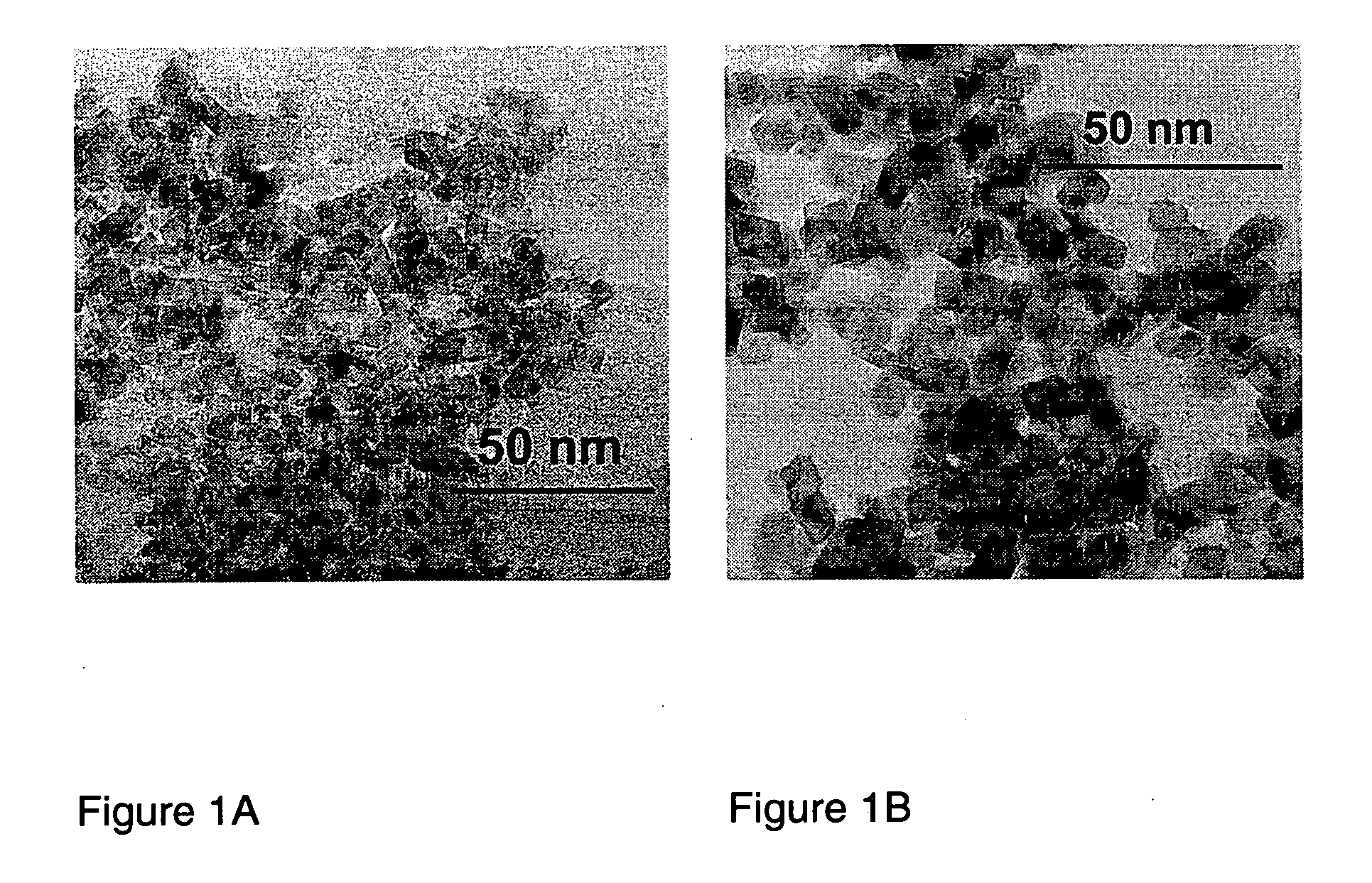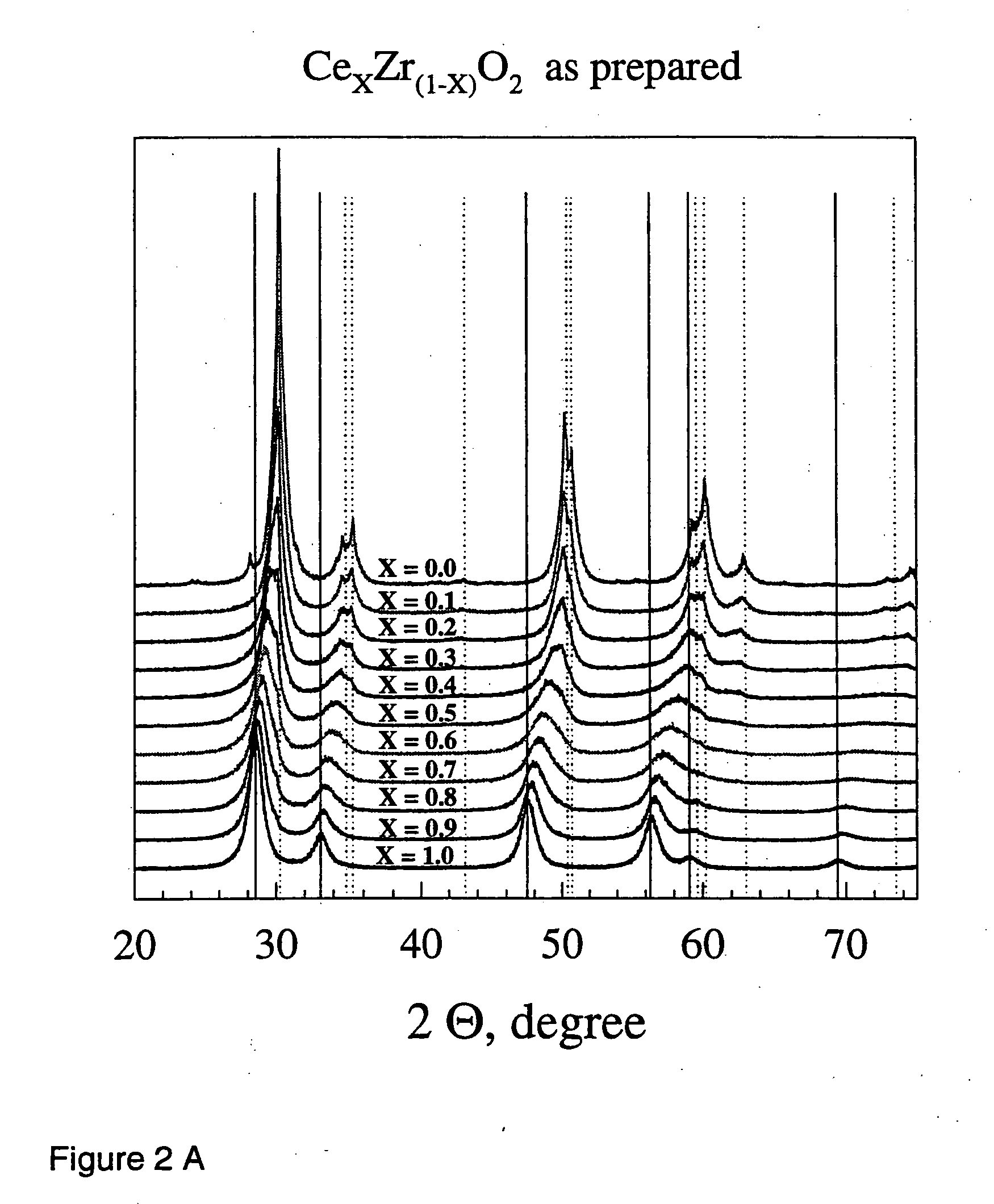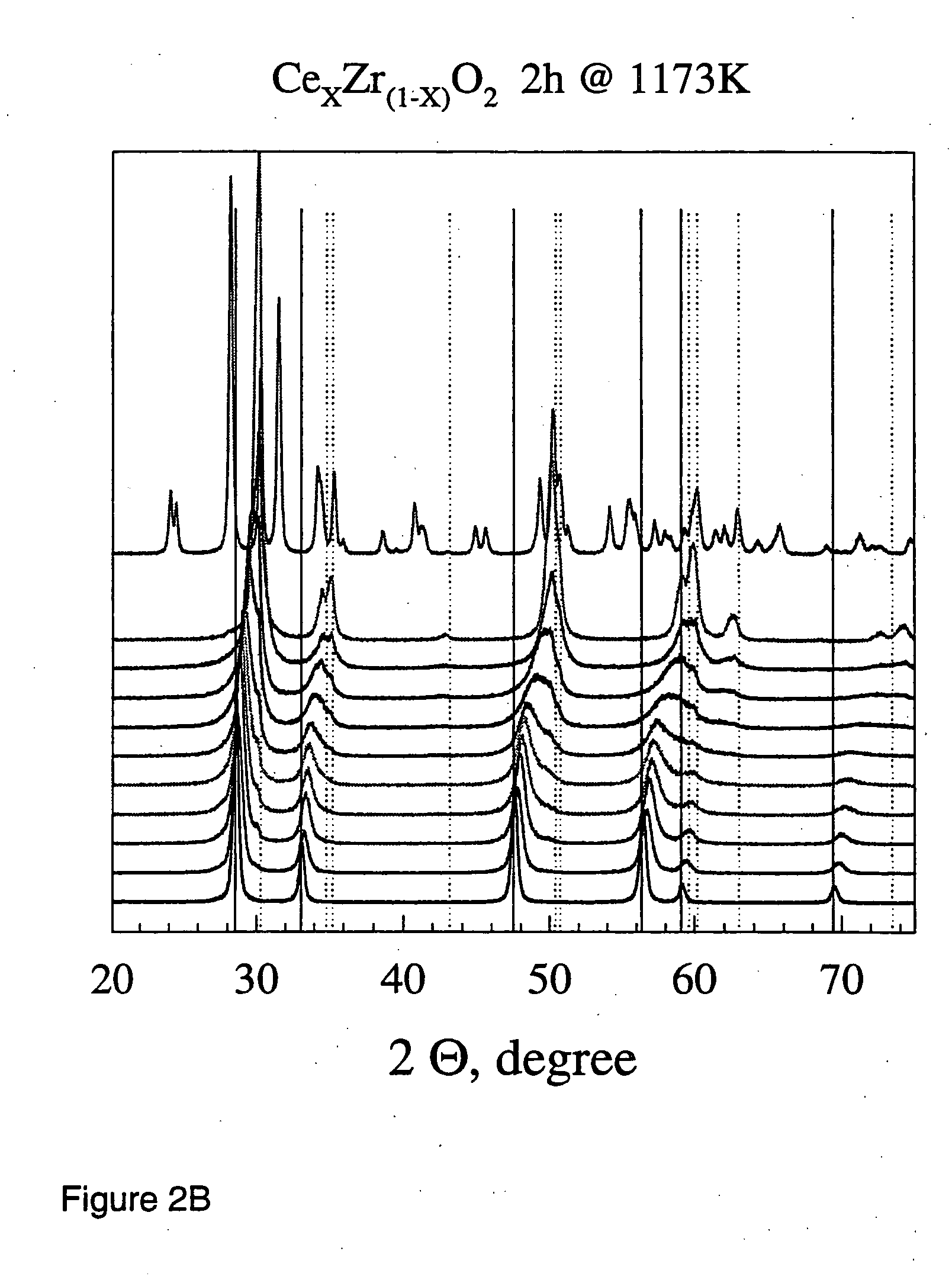Flame made metal oxides
a metal oxide and flame technology, applied in metal/metal-oxide/metal-hydroxide catalysts, lanthanide oxides/hydroxides, lithium compounds, etc., can solve the problems of reducing the overall temperature stability, unstable materials at higher zirconia content, and varying the molecular mixing state of ceria, so as to achieve a high degree of stabilisation and reduce the average crystal size
- Summary
- Abstract
- Description
- Claims
- Application Information
AI Technical Summary
Benefits of technology
Problems solved by technology
Method used
Image
Examples
examples
[0072] 1. Ceria, Zirconia and Ceria / zirconia
[0073] General Procedure
[0074] Ceria / zirconia mixed oxide powders were produced by flame spray pyrolysis in a laboratory scale setup. Cerium (III) acetate hydrate (Aldrich, >99.7%) and zirconium tetra acetylacetonate (Aldrich, 99%) were mixed according to the product composition and dissolved in a lauric acid / acetic acid mixture (1:1 by weight, heated to full dissolution). The total final metal concentration in the precursor mixture was kept constant at 0.15 mol / l throughout all experiments. The as-prepared solutions were stable and could be delivered into the flame of an FSP apparatus [Mdler et al. (2002A), FIG. 1] by a syringe pump (Inotech IR-232) at 5 ml / min. The flame consists of a central spray delivery, a premixed, circular support flame (diameter 6 mm, slit width 150.multidot.m) and a circular sheet gas delivery (ring of sinter metal, inner diameter 11 mm, outer diameter 18 mm, 5 l oxigen / min.). Oxygen (Pan Gas, 99.8%) was used as ...
PUM
| Property | Measurement | Unit |
|---|---|---|
| enthalpy | aaaaa | aaaaa |
| enthalpy | aaaaa | aaaaa |
| enthalpy | aaaaa | aaaaa |
Abstract
Description
Claims
Application Information
 Login to View More
Login to View More - R&D
- Intellectual Property
- Life Sciences
- Materials
- Tech Scout
- Unparalleled Data Quality
- Higher Quality Content
- 60% Fewer Hallucinations
Browse by: Latest US Patents, China's latest patents, Technical Efficacy Thesaurus, Application Domain, Technology Topic, Popular Technical Reports.
© 2025 PatSnap. All rights reserved.Legal|Privacy policy|Modern Slavery Act Transparency Statement|Sitemap|About US| Contact US: help@patsnap.com



